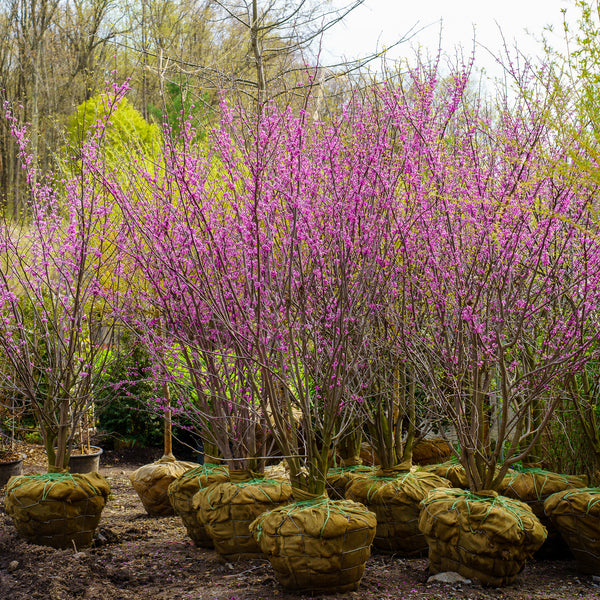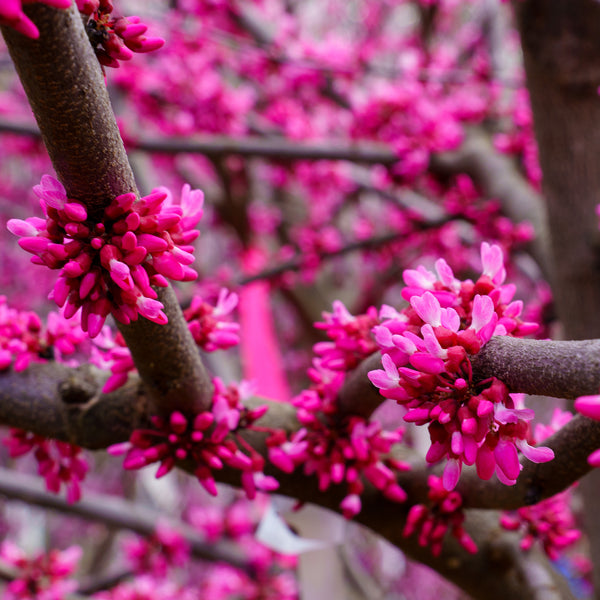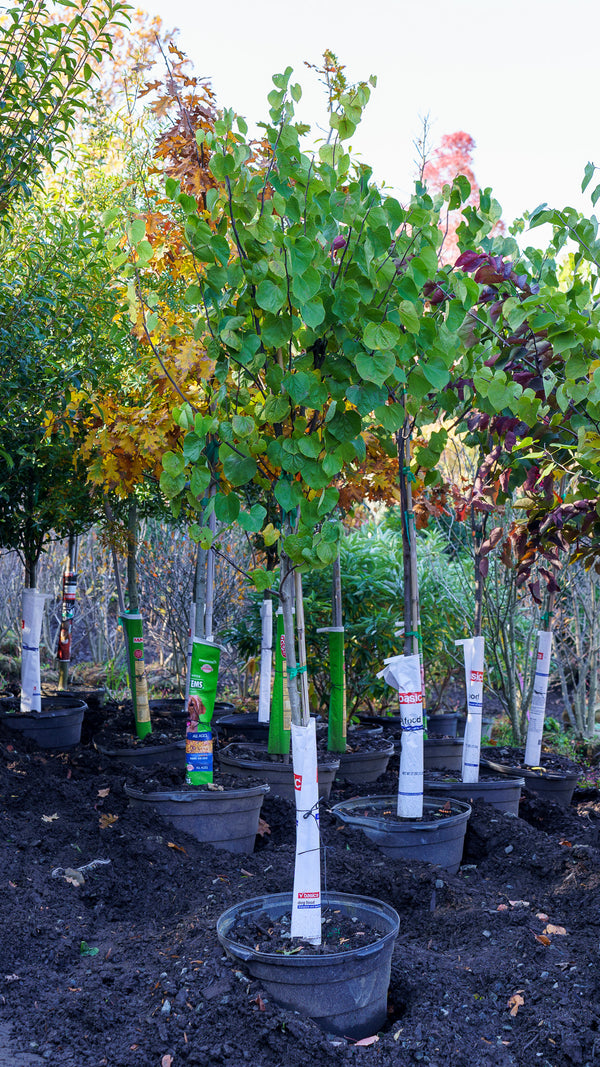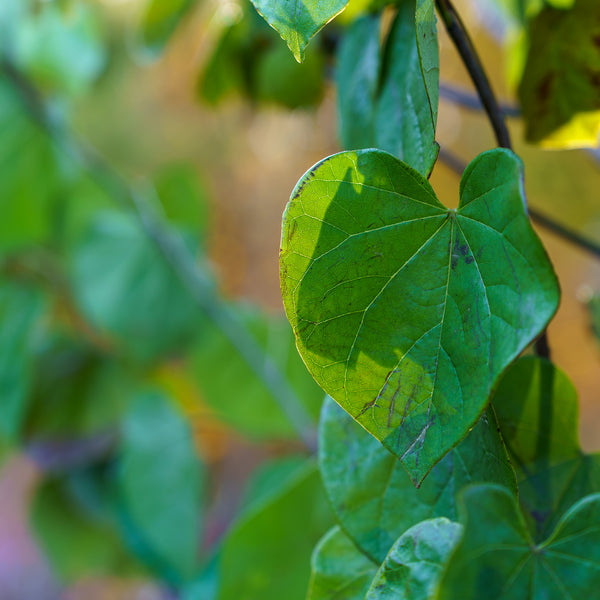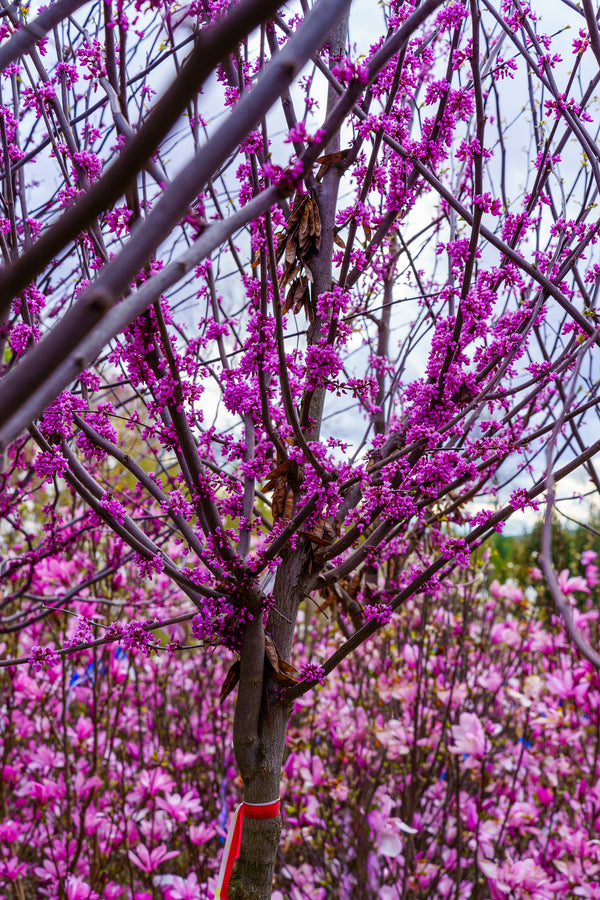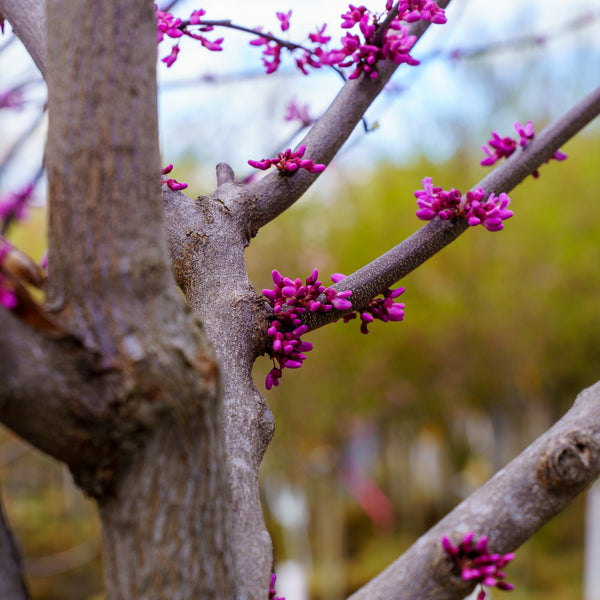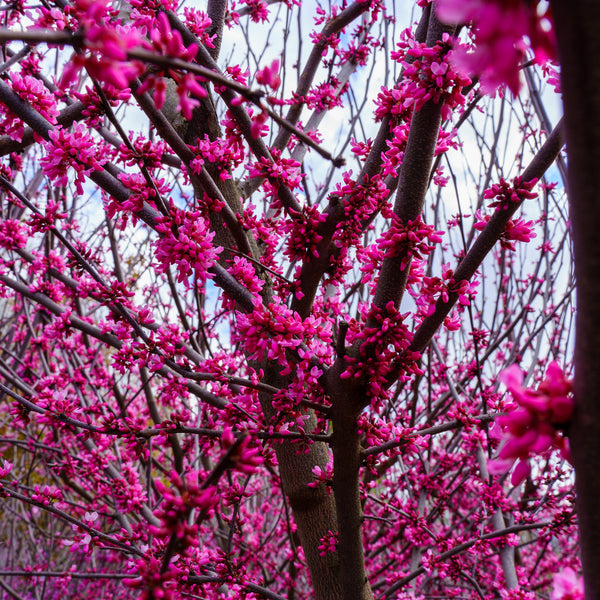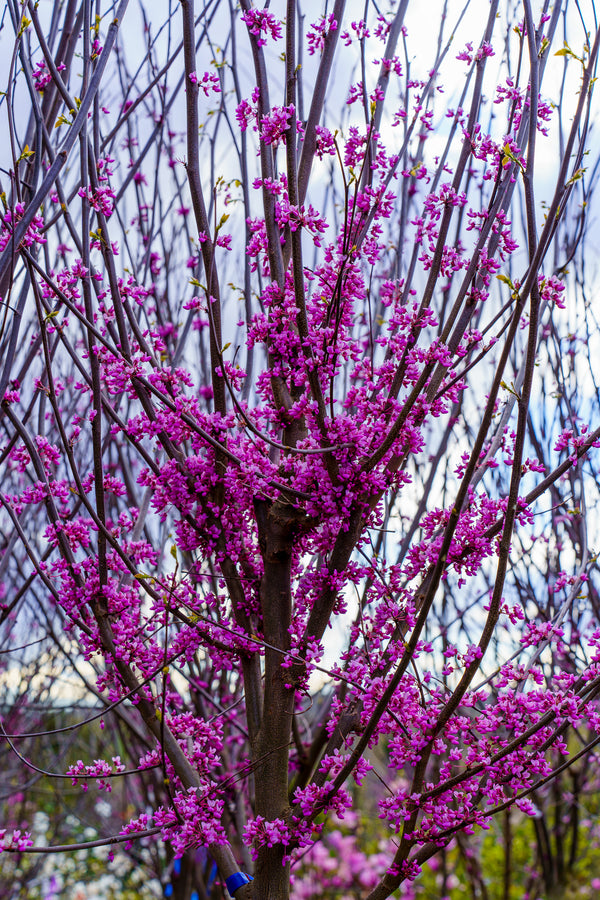Eastern Redbud
Eastern Redbud (Cercis canadensis)
Eastern Redbud (Cercis canadensis) is a native ornamental tree prized for its early spring blooms, heart-shaped foliage, and versatility in landscape settings. Found naturally across the eastern and central United States, this small deciduous tree offers four-season beauty and ecological value, making it a favorite in both naturalized and formal gardens.
Distinctive Features
In early spring, Eastern Redbud explodes with clusters of rosy-pink to magenta flowers that emerge directly along branches and even the trunk�a striking trait known as cauliflory. These pea-like blooms appear before the foliage, attracting pollinators and signaling the arrival of the growing season. As the flowers fade, broad, heart-shaped leaves emerge in shades of green, sometimes tinged with bronze. In fall, the foliage turns golden-yellow. The tree typically matures to 20 to 30 feet tall and wide with a rounded crown.
Growing Conditions
- Sun Exposure: Full sun to partial shade
- Soil: Moist, well-drained soil; tolerates clay and a wide range of conditions
- Water: Moderate; benefits from regular watering during dry periods
- USDA Hardiness Zones: 4�9
Ideal Uses
- Focal Point: Brilliant early bloom and unique form provide standout visual interest
- Native and Wildlife Gardens: Supports pollinators, especially early-season bees
- Foundation Planting: Enhances structures with soft form and color
- Shade Tree: Broad canopy provides dappled shade in small spaces
- Woodland Edges: Natural habit fits beautifully in transitional areas
Low Maintenance Care
- Watering: Water regularly during the first two growing seasons to establish a strong root system
- Pruning: Prune in late winter or after flowering to maintain shape and remove deadwood
- Fertilizing: Apply a balanced slow-release fertilizer in early spring if needed
- Mulching: Maintain a mulch ring to retain soil moisture and prevent root competition
- Protection: Avoid planting in poorly drained or low-lying areas prone to waterlogging
Why Choose Eastern Redbud?
- Native Beauty: Brings seasonal interest and supports pollinators
- Early Spring Bloom: Adds vibrant color before most other trees leaf out
- Versatile Size: Suitable for yards, gardens, and naturalized settings
- Low Maintenance: Easy-care tree once established
- Focal Point: A beloved ornamental that anchors planting beds or small landscapes
Cercis canadensis offers four-season interest, native adaptability, and pollinator value, making it a reliable and attractive focal point in landscapes across a wide range of climates.
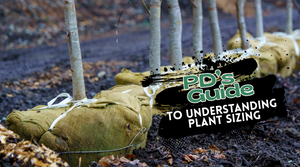
OUR SIZING
Not sure what 2 inch B&B or 30 Gallon Clump really means? This guide breaks down all our plant size terms so you know exactly what to expect, whether you're ordering online or picking up at our nursery. From caliper measurements to container volumes, we've decoded our system to help you shop with confidence.

Plant Detectives Shipping Guide
Nationwide plant shipping made easy. Learn how we ship trees, shrubs, annuals and perennials. No order too big or too small. Fast, careful, and contractor-friendly.

